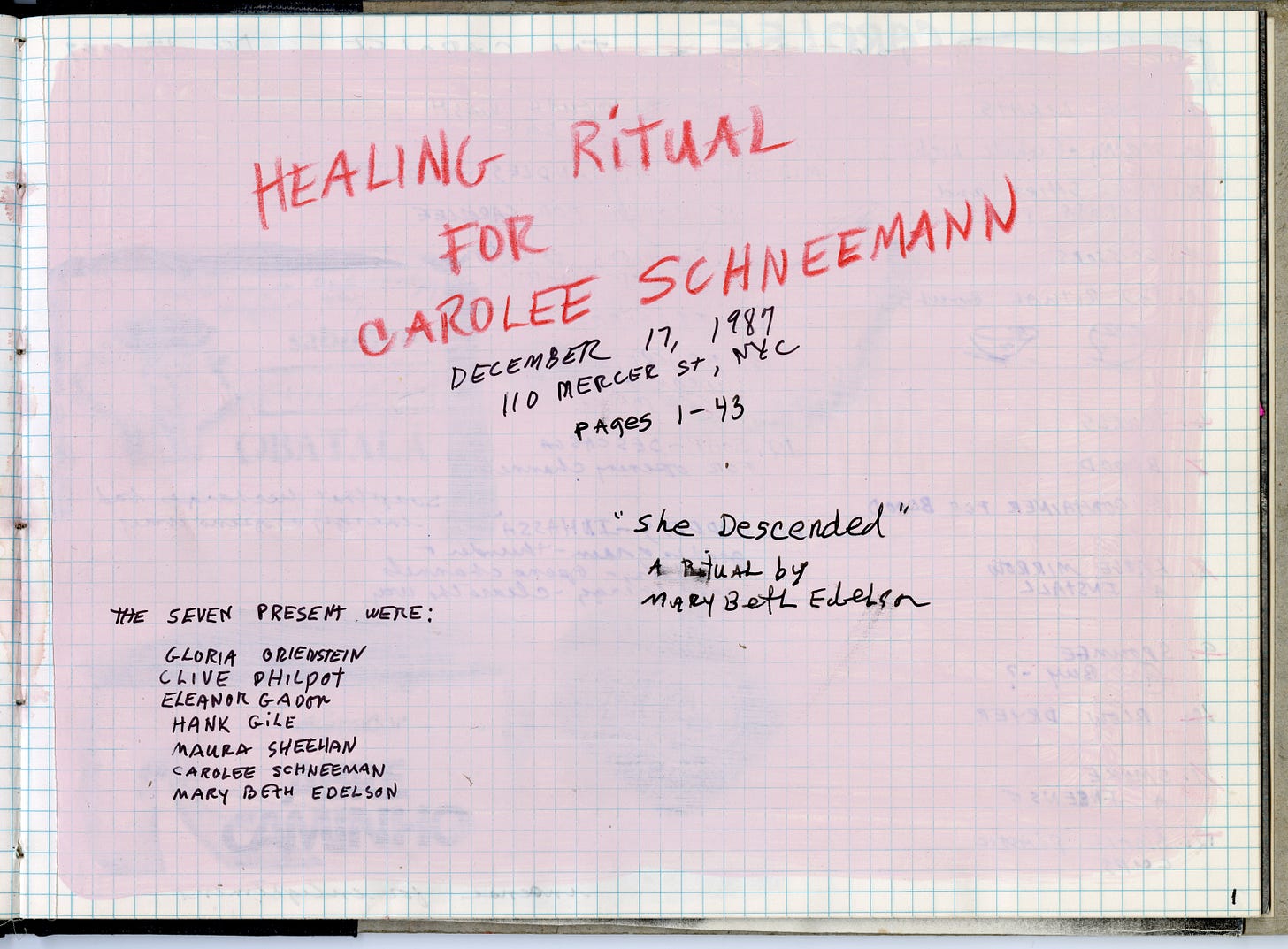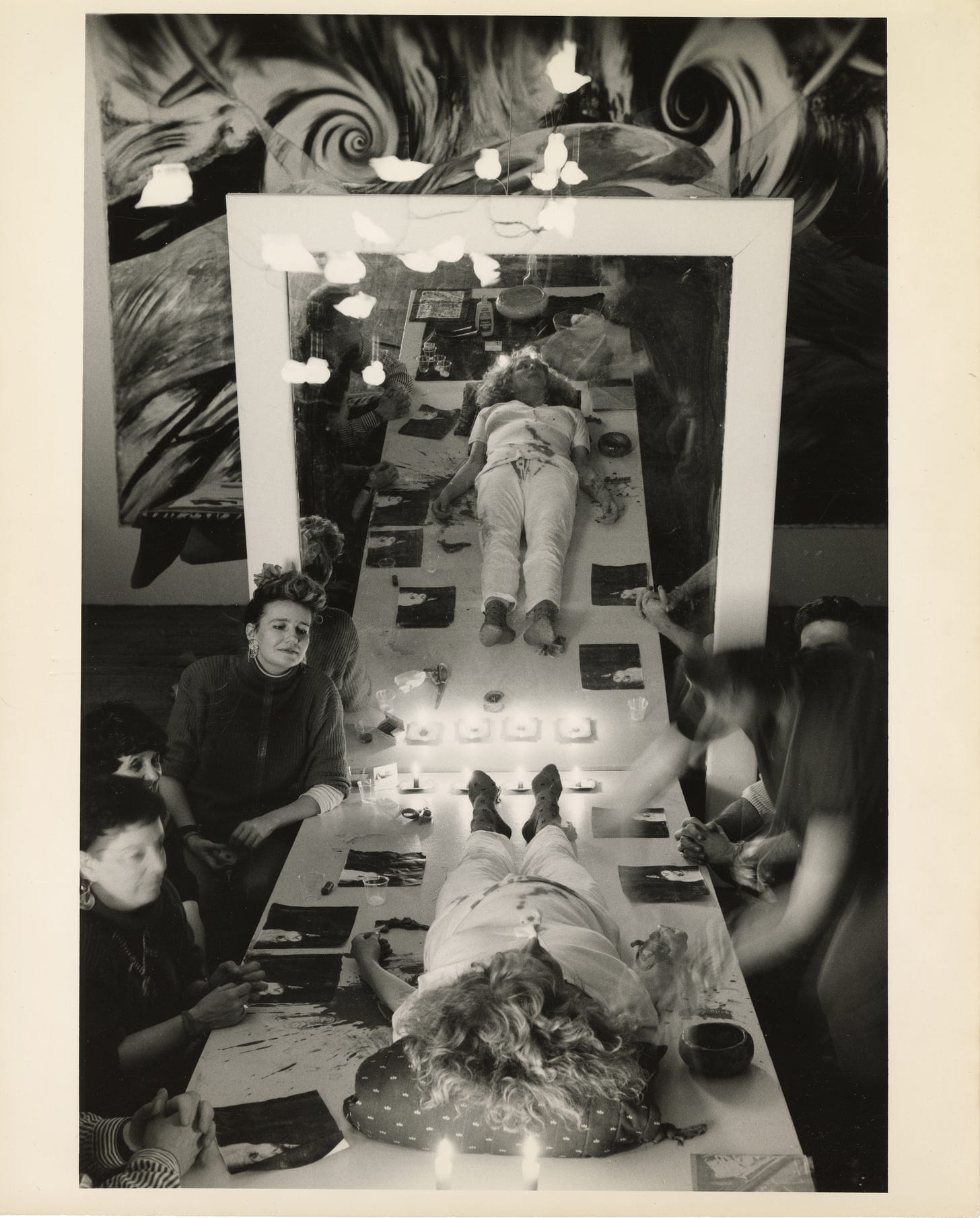TFI Digital Archive: Women's History Month Weekly Selections
Learn about Carolee Schneemann's Healing Ritual through the accompanying artist book and photographs.
Welcome to our first of many TFI ministacks! This week, we’ll be delving into the TFI Digital Archive to explore Women’s History Month selections.
Women’s History Month (WHM) traces its origins to the 1978 “Women’s History Week,” organized by the Education Task Force of the Sonoma County (California) Commission on the Status of Women. This event in Santa Rosa coincided with International Women's Day on March 8th. Since 1987, Women’s History Month has been nationally recognized— and it’s here to stay.
WHM offers us the opportunity to reflect on women’s contributions to culture, and to continue fighting for gender equity worldwide.
TFI is dedicated to preserving and making feminist history accessible to all. Click the button below to support our work and ensure future generations can learn from the powerful feminists who came before us.
TFI Digital Archive: Women’s History Month Weekly Selections
Healing Ritual for Carolee Schneemann, Artist Book and Photographs
In December 1987, Mary Beth Edelson, Gloria Orenstein, Clive Philpot, Elinor Gadon, Hank Gile, and Maura Sheehan performed a healing ritual for Carolee Schneemann at Mary Beth Edelson’s studio on 110 Mercer Street, New York, NY.
As a feminist artist, Edelson often staged her performance art in nature, incorporating goddess imagery to connect to women’s empowerment and feminine energy. She and Schneemann were part of a cohort known as, “first generation feminist-artists.”
Mary Beth Edelson, "Healing Ritual for Carolee Schneemann Artists' Book", 1987.
Copyright held by the Estate of Mary Beth Edelson; preserved through a partnership with The Feminist Institute. Image courtesy of the Estate of Mary Beth Edelson and David Lewis Gallery.
See record.
This ritual exemplifies the embodiment of feminist art and performance as a medium. It began with Schneemann changing her clothes and meditating alone, while the others discussed the ritual steps, such as noise-making, and practiced.
During the ritual, the group read from Descent to the Goddess, by Sylvia Perera, a text that explores women’s freedom and moving away from male domination.
“Ereshkigal (Edelson note: goddess of the underworld) is caught in and embodies an ordained process: “that all life death doth end,” that birth and death are intimates in the history of women, that change and pain are inevitable. She reminds us that many of the great goddesses suffer…They do not avoid suffering, but face into it, and express its reality,” (Perera, 36).
Following the reading, the group performed a collective wounding to explore loss and darkness as a means to release.
Mary Beth Edelson, "Healing Ritual for Carolee Schneemann", 1987.
Copyright held by the Estate of Mary Beth Edelson; preserved through a partnership with The Feminist Institute. Image courtesy of the Estate of Mary Beth Edelson and David Lewis Gallery.
See record.
After the collective wounding, the group covered Schneemann and let her speak on loss as she needed to, whether this was telling her story, crying, or screaming. When she was done, the group washed her wounds, and their own, using soap that “opened channels.” They then wore wound bracelets to symbolize the gradual fading of hurt. To close out, the group cut-off Schneeman’s black clothes to reveal a new “skin” (set of clothes, seen above) to embody rebirth.
To learn more about Mary Beth Edelson, her decades-long multi-media art career, and feminist activism, explore her collection in the TFI Digital Archive.








